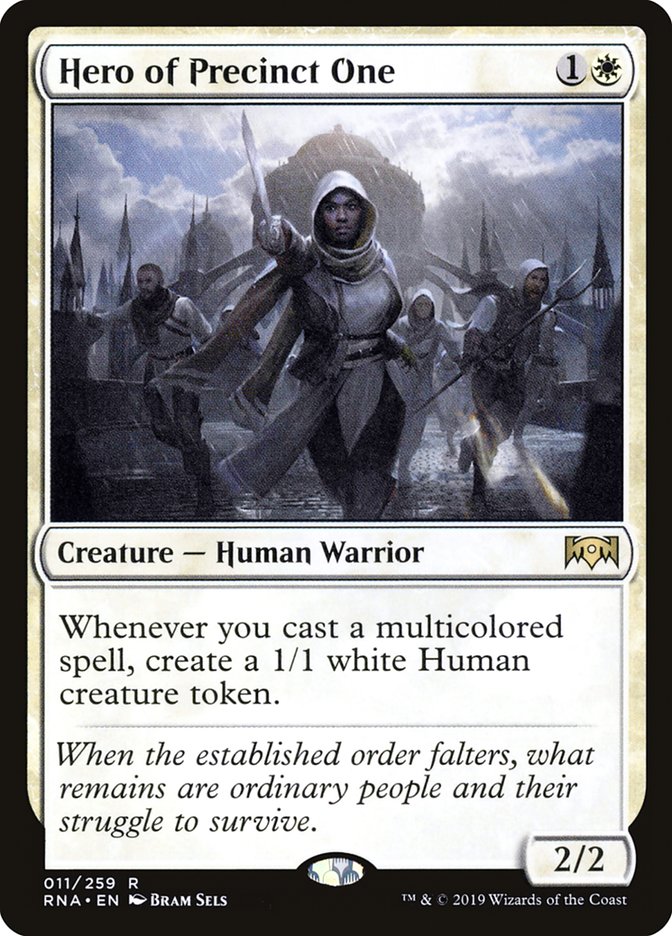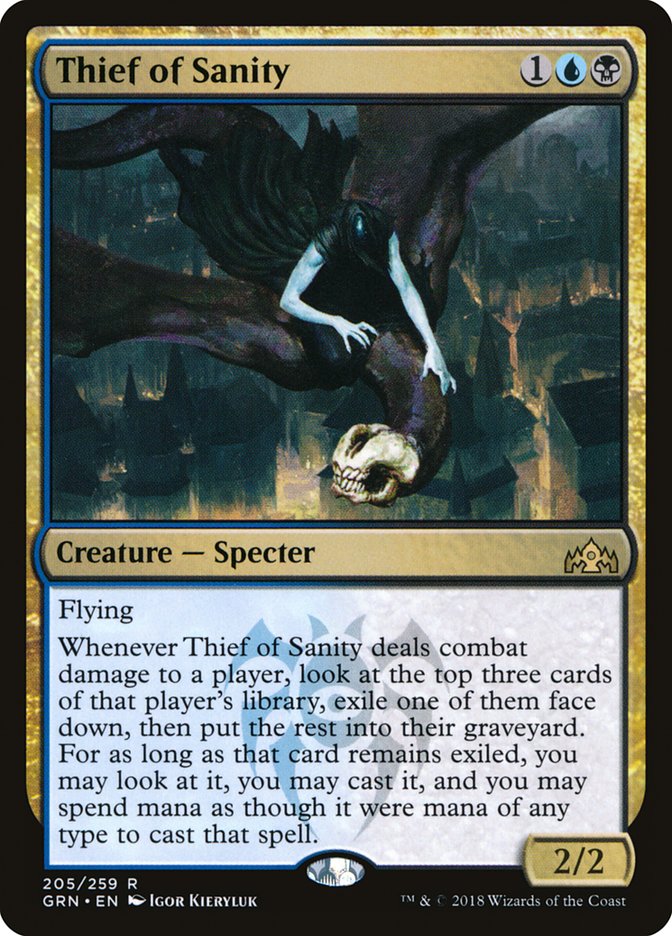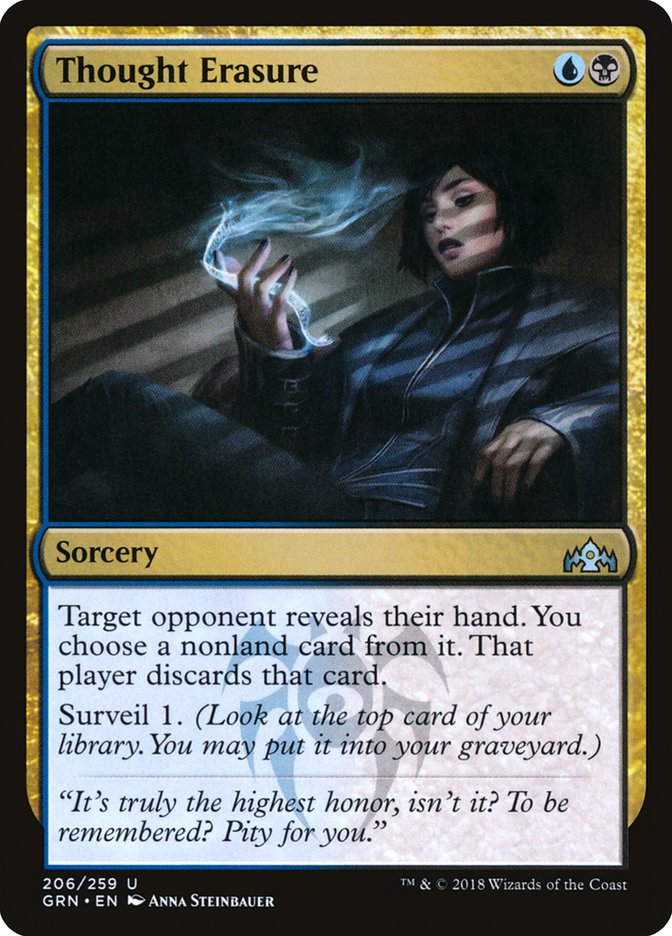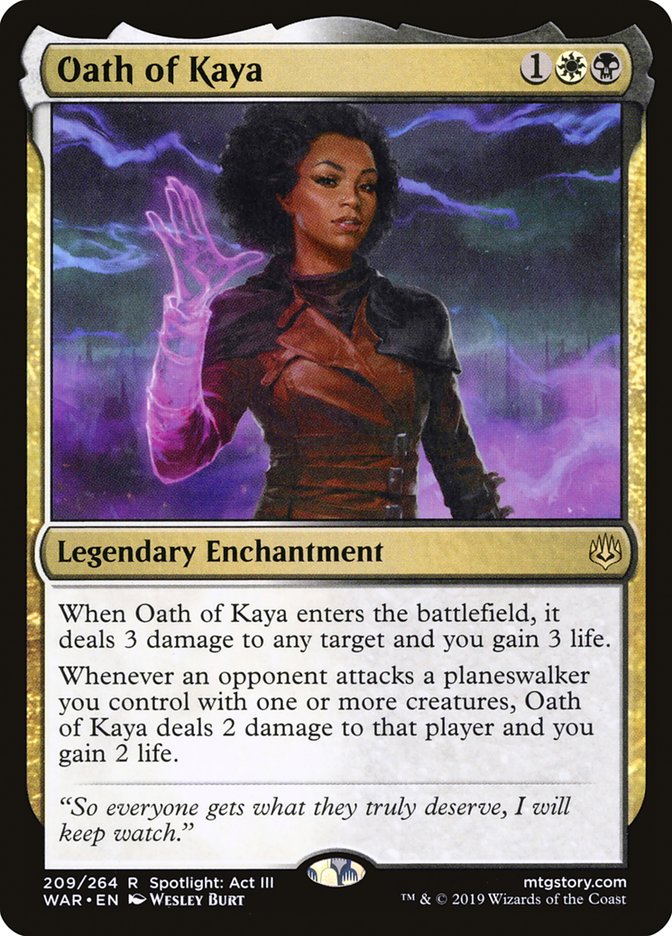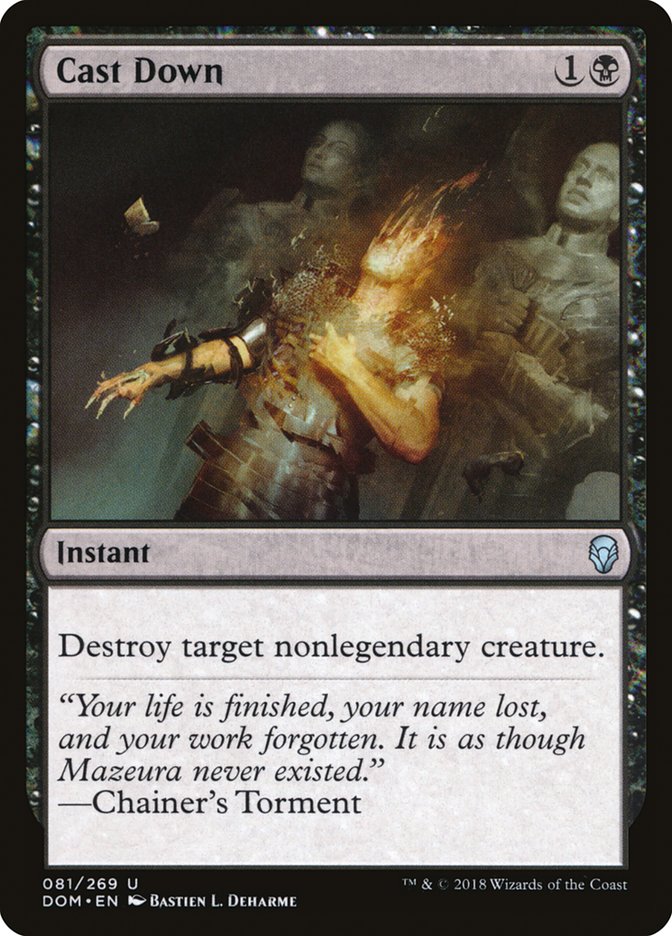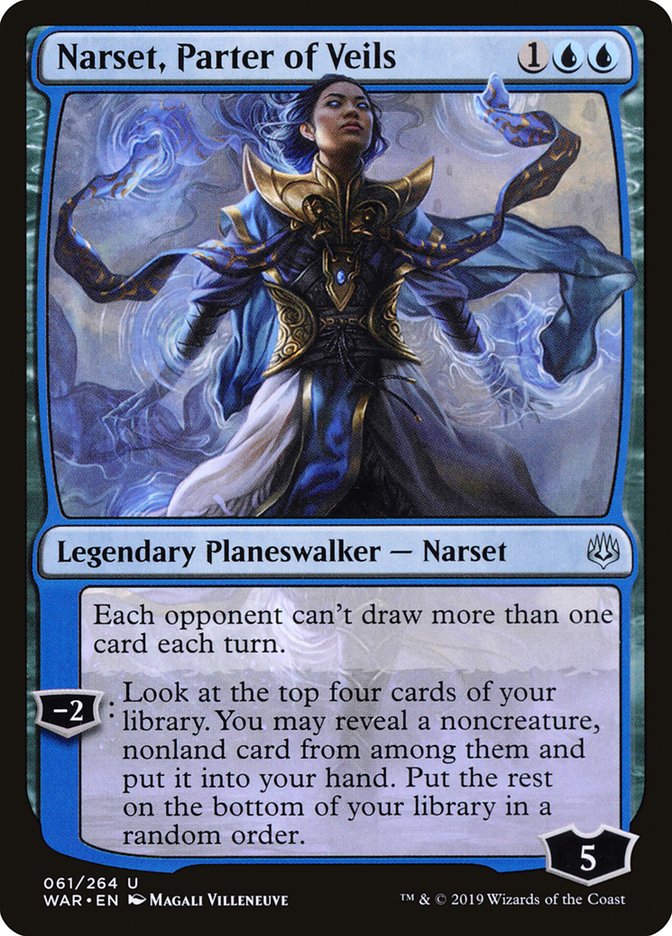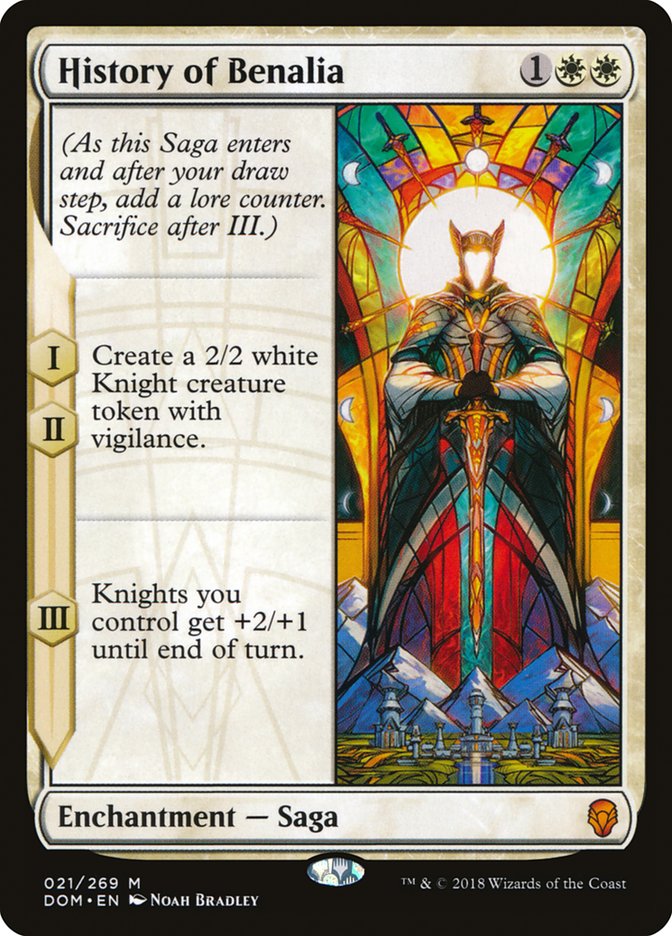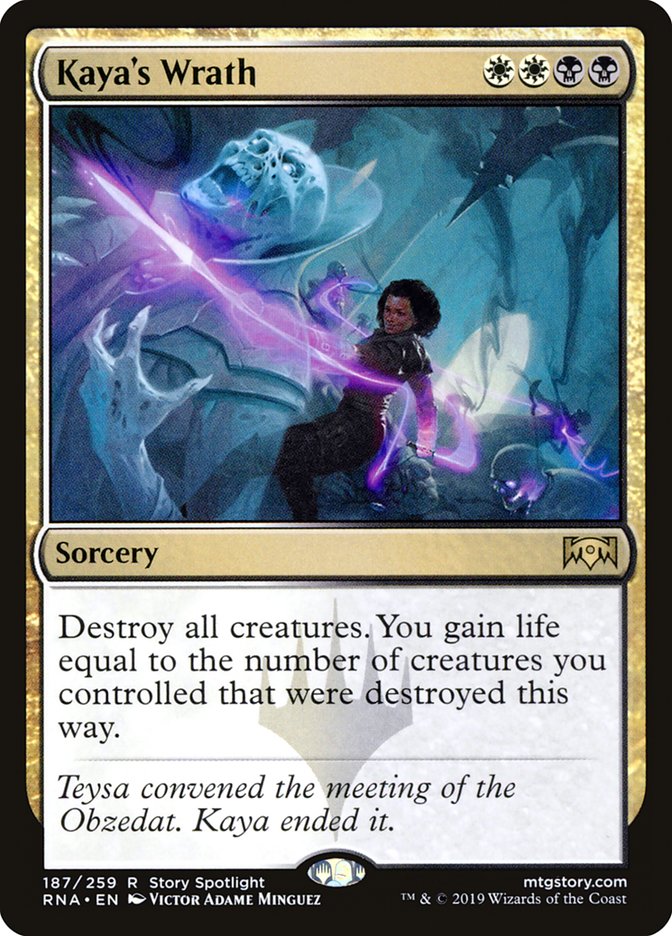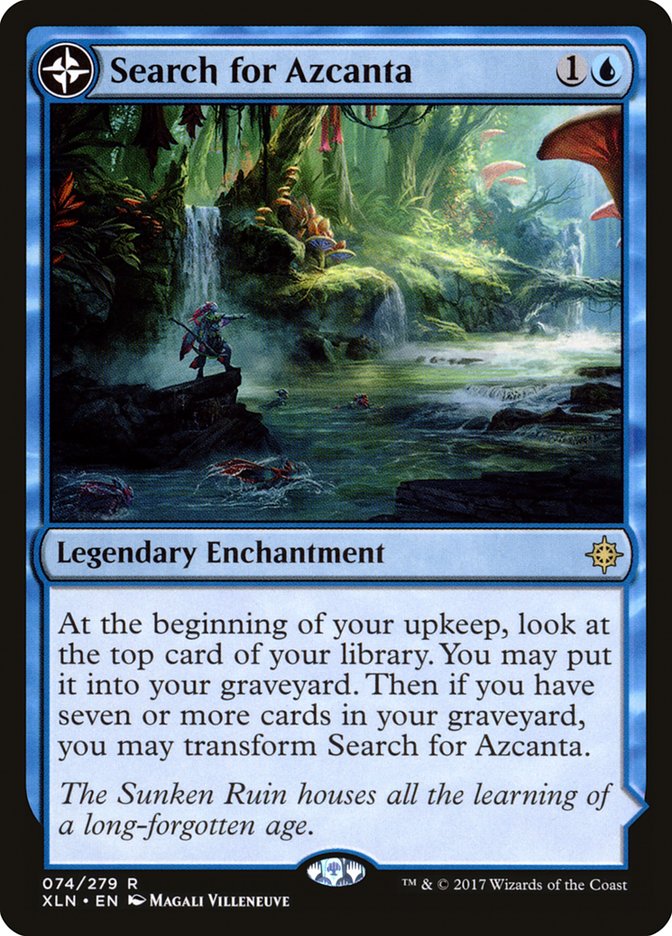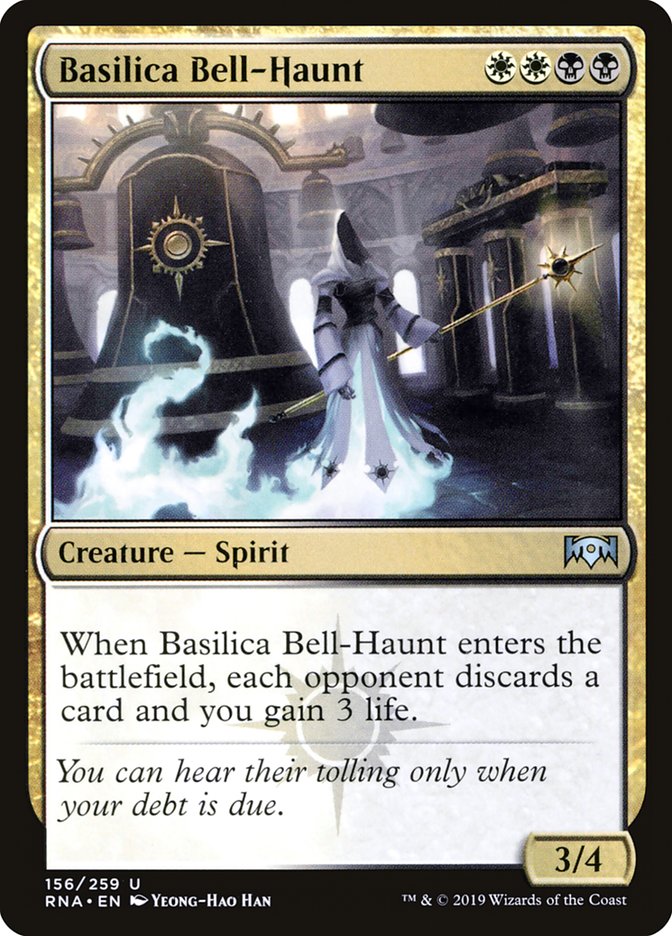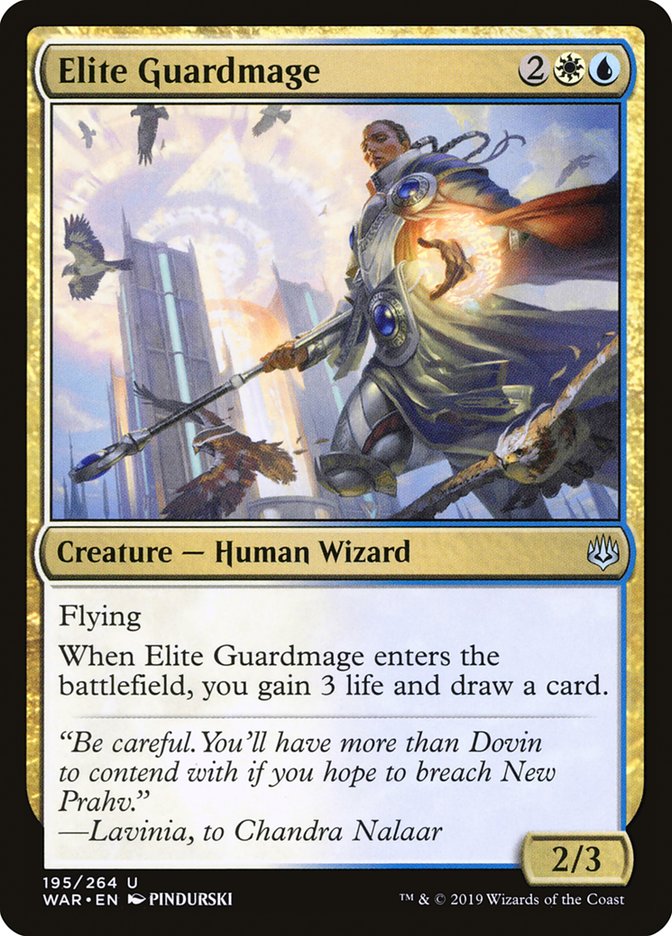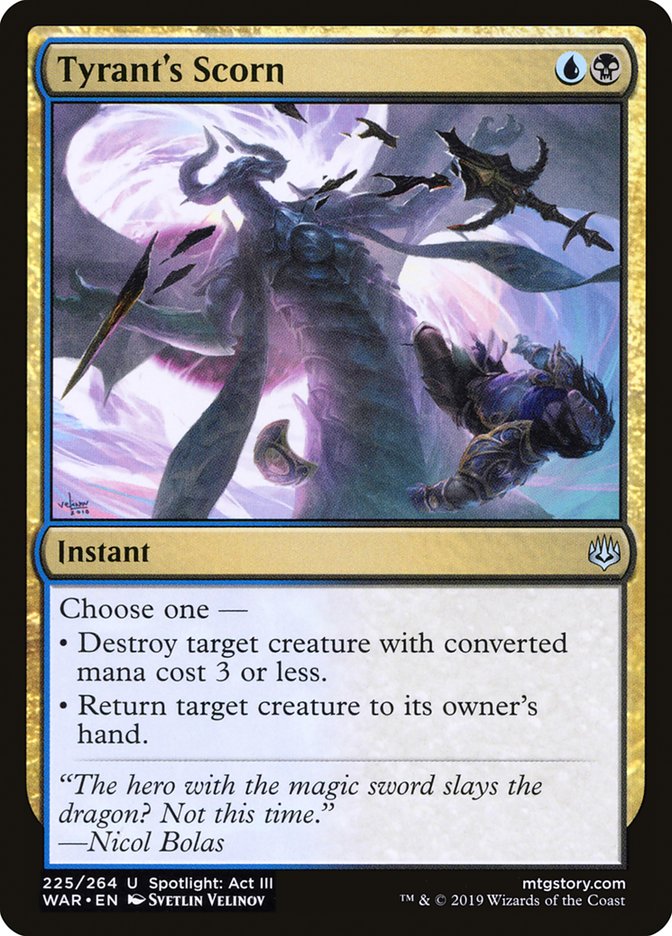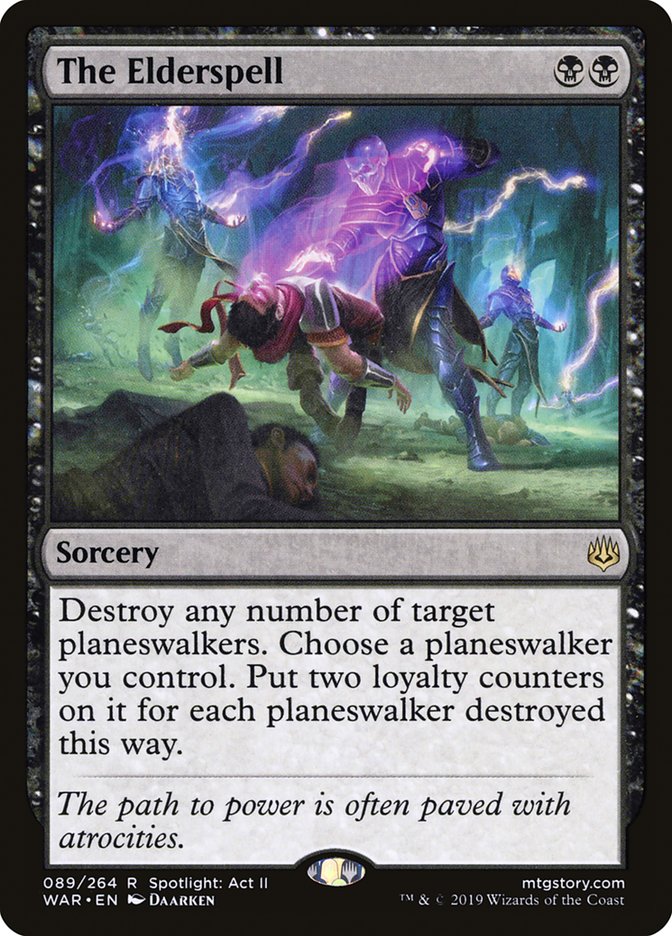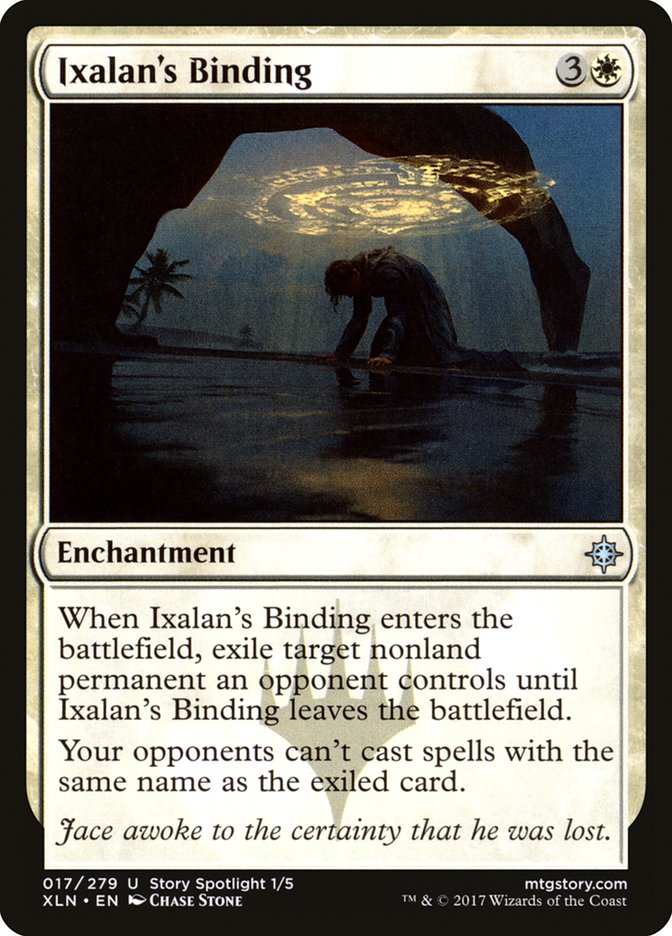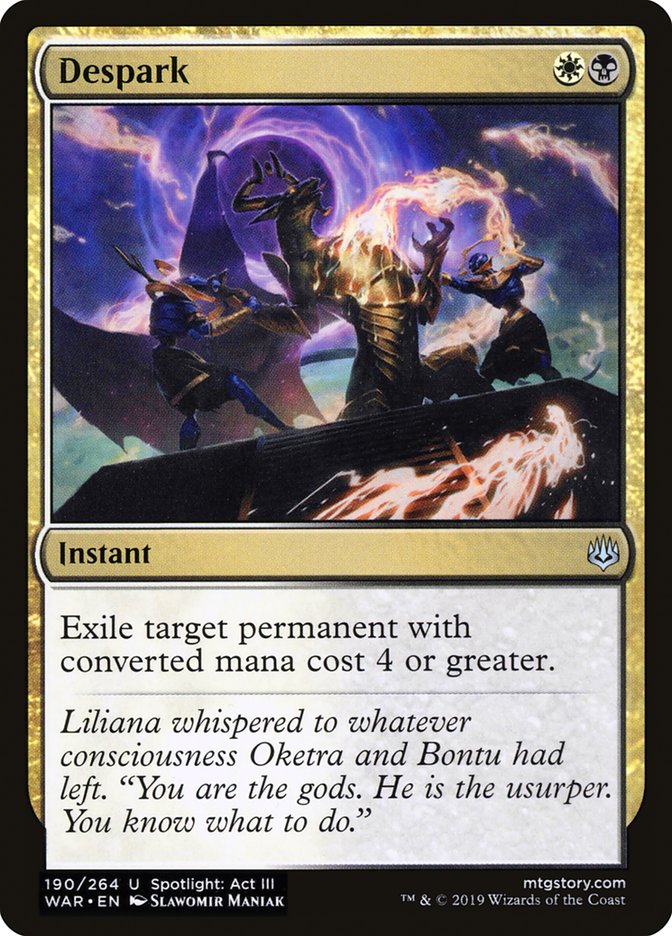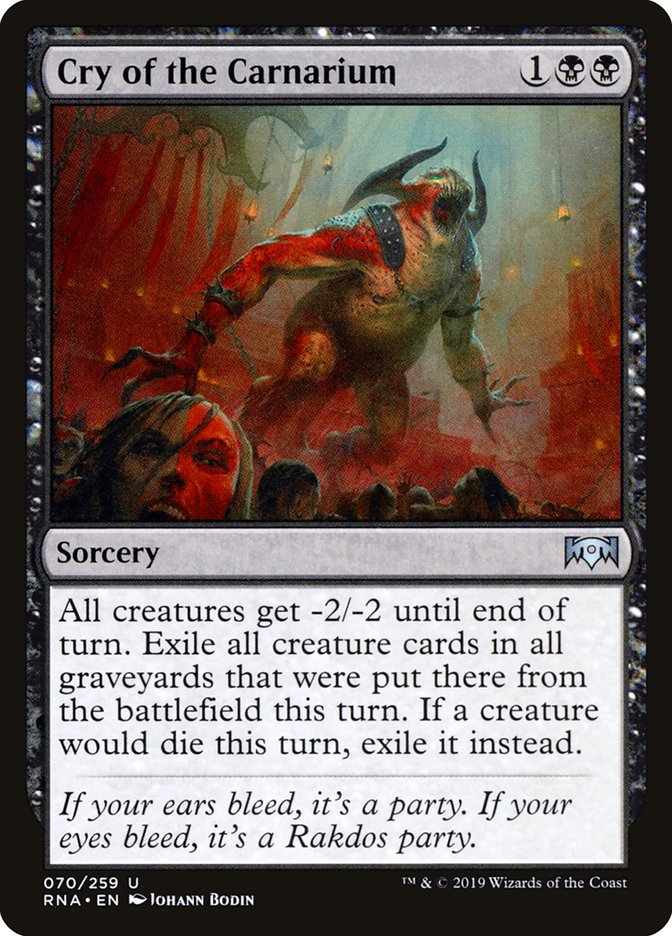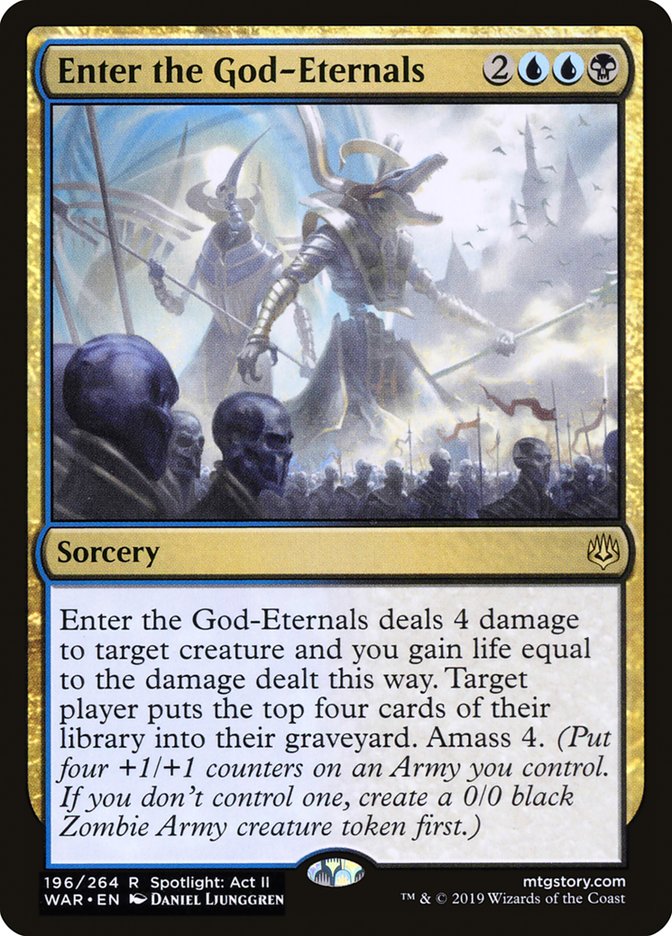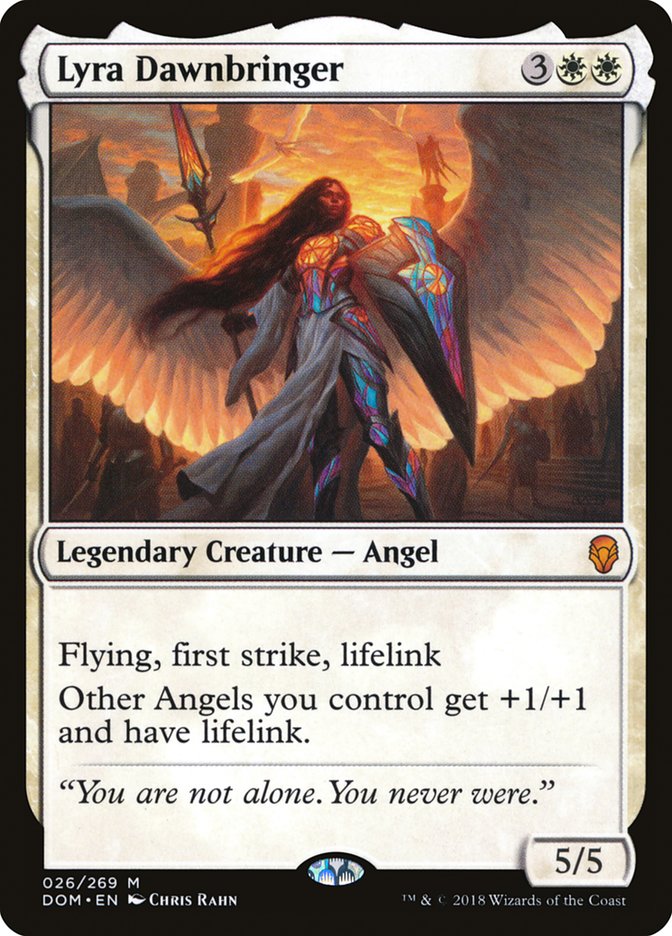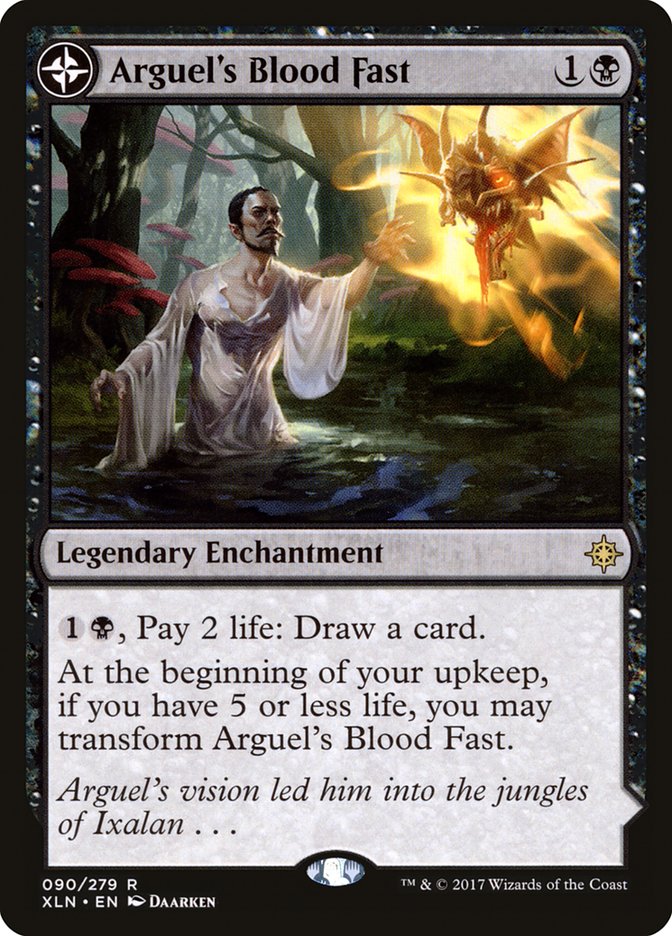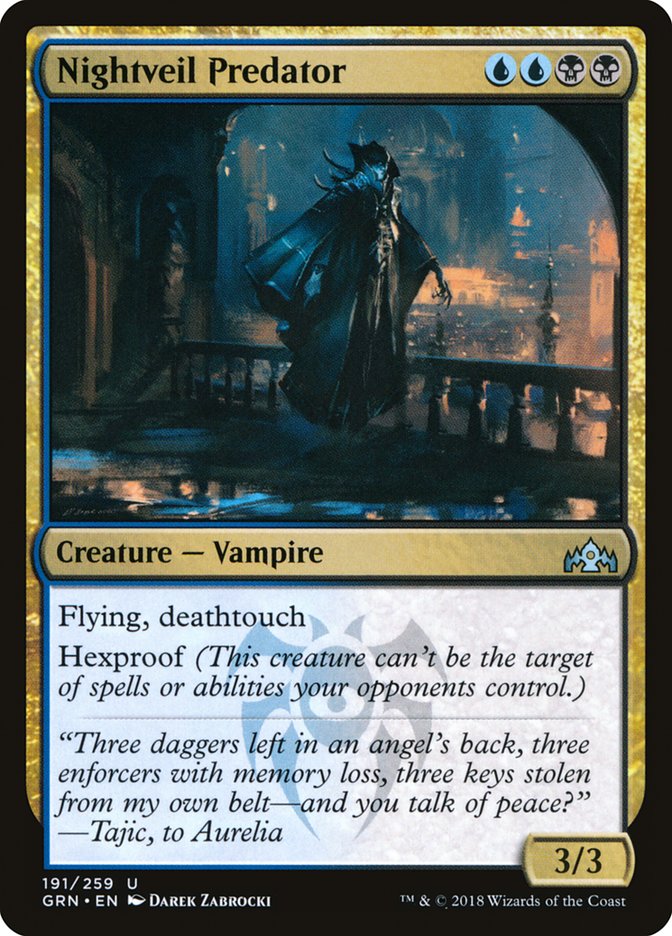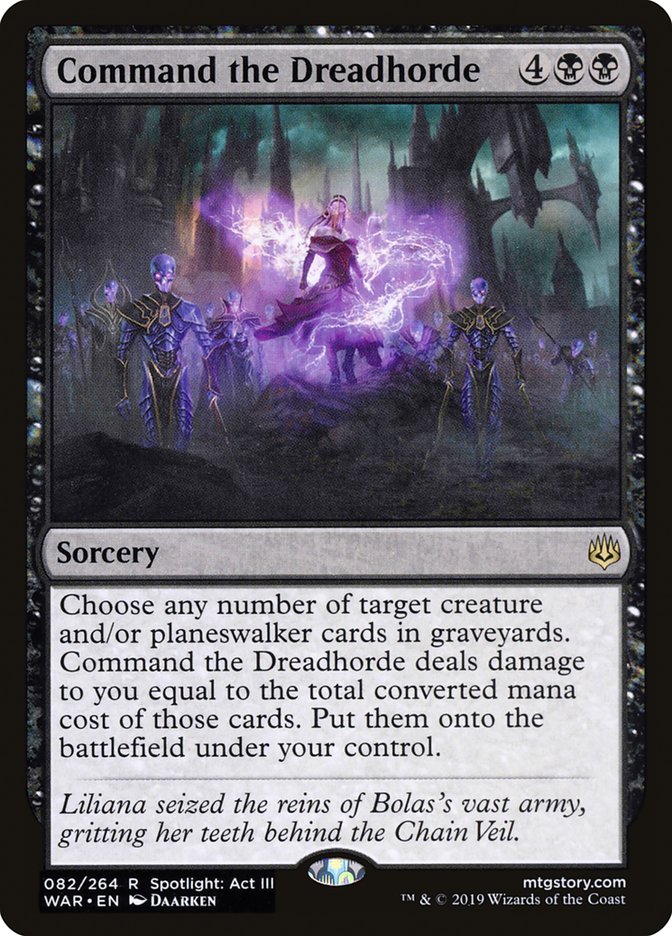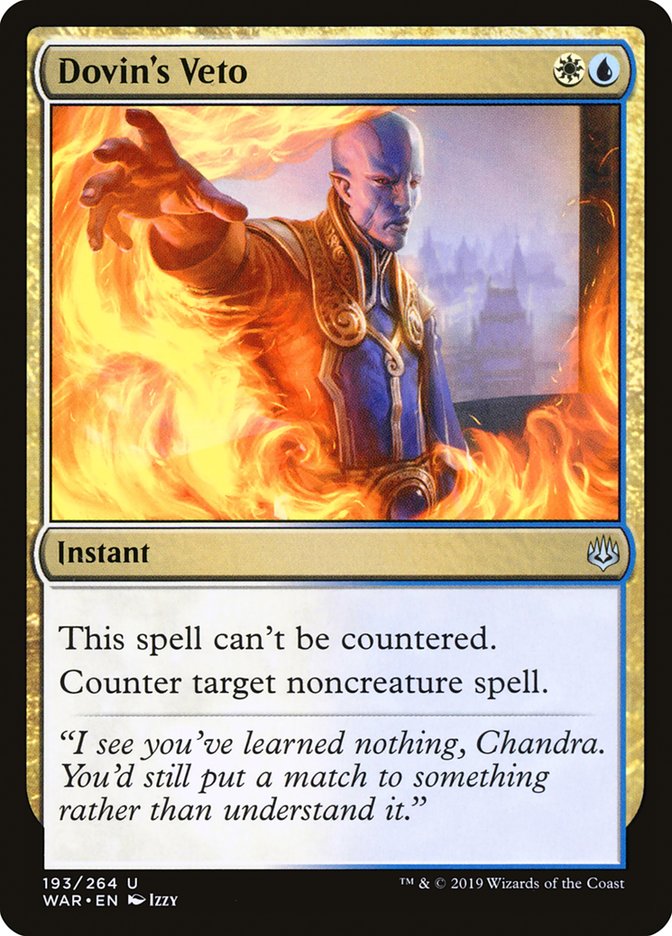Starting to finally play Esper in current Standard was an unusually intimidating prospect to me, which led to me focusing on other decks instead for quite a while. There are just so many ways to build the deck that it’s hard to know where to even start, to figure out what the draws are to any individual list, and to figure out what approach is right for you and your playstyle.
With Esper decks of various types making up a startling two-fifths of the field for Mythic Championship III this weekend in Las Vegas, though, it is clear that understanding the inner workings of Esper is among the most important things to get a grasp in in this Standard format. Whilst I ultimately ended up registering Simic Nexus for this Mythic Championship (the reasoning for which you can find in Emma Handy’s article this week), I played Esper Superfriends both at the SCG Season One Invitational and in a recent Fandom Legends tournament. I’ve put in a fair amount of time with Esper, and especially the bigger, slower versions of the deck, and have a lot of feelings on the different builds as a result.
The Three Pillars
There are three very distinct approaches to Esper you can take, and it all comes down to your opinions on the placement of two cards in whatever metagame you happen to be battling in: Hero of Precinct One and Thief of Sanity.
Esper Hero
Creatures (14)
Planeswalkers (8)
Lands (26)
Spells (12)

Esper Hero is where you end up if you like how Thief of Sanity lines up against the metagame you expect. Esper Hero as a strategy dates back to the beginning of Ravnica Allegiance Standard when Wyatt Darby Top 8’ed SCG Open Indianapolis. The deck quickly fell off in popularity due to how much it struggled against the Esper Control builds of the time, with Kaya’s Wrath punishing Hero of Precinct One, whilst Absorb, Vraska’s Contempt, Chemister’s Insight, and Search for Azcanta meant their deck was very effective at answering your slow, expensive threats whilst going far over the top of you with their powerful card advantage.
Narset, Parter of Veils and Teferi, Time Raveler have rendered those previous builds of Esper Control obsolete by embarrassing Chemister’s Insight and Absorb, respectively, whilst Esper Hero has received a whole host of new toys, meaning that it is viable once more. The concept is simple: Hero of Precinct One and Thought Erasure combine to pressure your opponent’s removal spells so that a Thief of Sanity can come down and take over the game. You play minimal interaction that doesn’t also have some sort of proactive role; Oath of Kaya can be a burn spell if needed, whilst Tyrant’s Scorn, in addition to triggering Hero of Precinct One, allows you to save your threats from removal in matchups where your opponent doesn’t have cheap creatures for you to kill.
This is the most threat-dense and “aggressive” version of Esper and as such is well-equipped for metagames where there’s a lot of importance placed on ending the game. Against a deck like Simic Nexus, playing cards like Hero of Precinct One and Thief of Sanity lets things snowball in your favour more easily, and Thief of Sanity is particularly great at ensuring Simic and Bant Ramp decks have as few draw steps as possible to try to topdeck you once you’ve cleared out the threats in their hand with Thought Erasure.
Conversely, this version of the deck is at its worst in metagames that feature a high density of cheap removal. The Hero into Thief plan is great if people are removal-light and this pressures them to use up their one removal spell earlier than they’d like, but it is a lot weaker if your opponent is playing a slew of burn spells. Mono-Red Aggro and Izzet Phoenix are both very good at killing your Thief of Sanity for a lot less mana than you spent on it. On a similar note, the bigger Esper decks with their Kaya’s Wraths, Cast Downs, and Oath of Kayas have such a density of removal that it can be hard to get in that first Thief hit (though the game will tend to cascade in your favour if you can).
Esper Superheroes
Creatures (8)
Planeswalkers (12)
- 4 Teferi, Hero of Dominaria
- 1 Liliana, Dreadhorde General
- 4 Teferi, Time Raveler
- 3 Narset, Parter of Veils
Lands (26)
Spells (14)

Creatures (9)
Planeswalkers (11)
Lands (26)
Spells (14)

Esper Superheroes was popularised after Martin Muller had a good finish with it in Magic Arena’s Mythic Qualifier Weekend, where he cut the Thief of Sanities that Esper Hero plays and moved towards Narset, Parter of Veils. It is where you end up if you don’t like how Thief of Sanity lines up against the expected metagame, but you do like how Hero of Precinct One lines up against it.
It came into existence at least in part because it boasts a better Mono-Red Aggro matchup than the Esper Hero builds, since Hero of Precinct One cares a lot less about removal than Thief of Sanity does. Your opponent will be gaining less of a mana advantage by firing a burn spell at an early Hero than at a Thief, and having to do so will often meaningfully delay the development of their own battlefield presence. Meanwhile. the ability to hold Hero of Precinct One until you have enough mana to immediately trigger it once it hits the battlefield means you can have a Legion Warboss-esque effect where, even if your Hero dies, the planeswalker-based decks will still have to deal with the nuisance of the 1/1 token that is left behind chipping in at the loyalty counters sitting on their planeswalkers.
The question you should be asking in regards to Hero of Precinct One is not whether your opponent can kill it but how much a ground presence matters in the matchup. Even ignoring that Hero dies very easily to the burn spells from Izzet Phoenix, the problem is that an alive Hero just doesn’t really do anything when the battle takes part in the air where Phoenixes and Drakes abound. Conversely, against a deck like Mono-White Aggro, the battle is all about battlefield presence, as developing an overwhelming ground presence is exactly what their deck is trying to achieve, and a sea of 1/1 tokens is perfect for going toe-to-toe with their 2/1s whilst effectively chump-blocking Knight tokens the turn that History of Benalia hits its final mode. Ask yourself if your opponent is trying to develop a meaningful ground presence, and if the answer is yes, then Hero of Precinct One is an appealing card to have access to.
There’s a tiny bit of a spectrum with these Esper Superheroes lists, with the two examples I’ve added here being Ben Friedman’s, which leans more controlling, and Brian Braun-Duin’s, which resembles a slightly bigger version of Esper Hero. Ultimately, the decision to play Narset instead of Thief whilst still maintaining access to Hero are the most major identifying factors of these two lists, so I consider them spiritually similar.
Esper Superfriends
Creatures (2)
Planeswalkers (13)
- 4 Teferi, Hero of Dominaria
- 1 Liliana, Dreadhorde General
- 4 Teferi, Time Raveler
- 4 Narset, Parter of Veils
Lands (26)
Spells (19)

Esper Superfriends has drifted in and out of popularity ever since Oliver Tomajko Top 8’ed SCG Open Syracuse with it near the beginning of War of the Spark Standard. Whilst at the time it was much more heavily planeswalker-focused, featuring cards like Dovin, Hand of Control and Kasmina, Enigmatic Mentor, over the weeks since it has matured in a direction such that it resembles the other builds of Esper more closely, with the biggest difference between it and Esper Superheroes being the decision to maindeck cards like Kaya’s Wrath and Search for Azcanta instead of Hero of Precinct One. It is the most controlling version of Esper by a fair amount as a result.
You play Esper Superfriends when you believe both Hero and Thief are going to be badly positioned Magic cards, in metagames where ground presence isn’t what the games are typically about and where there is a high density of removal floating around. Izzet Phoenix is the easy go-to example of a deck that motivates playing Superfriends, as that deck has a critical mass of removal, is very capable of finding more removal when needed, and features only evasive threats that don’t care about the 1/1s Hero produces.
A deck like Simic/Bant Ramp shows how we can look at this in a more nuanced way. They lack removal, so Thief of Sanity is great making Esper Hero appealing, but if you decide that you don’t want to play Thief of Sanity due to other reasons in the metagame, then you’d much rather be on a Superfriends build against them than a Superheroes one, since ground presence hardly matters at all when all their ground threats can also just tap for mana instead of attacking.
Optimising Esper
Based on this rundown of what motivates playing the different versions of Esper, you should be well-equipped to figure out how each approach lines up against any particular metagame. Asking yourself how much removal is being played and how much a ground presence matters will get you most of the way there. But how do you build your Esper list once you’ve decided on which of the three approaches to take? There’s a lot of crossover in card choices, but also a lot of key distinctions that are easy to mess up if you don’t understand the reasoning behind them.
Esper Hero wants Elite Guardmage, whilst Esper Superfriends wants Basilica Bell-Haunt, and I consider this non-negotiable. Elite Guardmage digging you deeper into your deck contributes perfectly to Esper Hero’s plan of gaining cascading advantage from its threats, whilst Basilica Bell-Haunt plays better towards an attrition strategy like that of Esper Superfriends by increasing the rate at which you run your opponent out of resources.
More subtly, it is hard to play Elite Guardmage without Hero of Precinct One in your deck, as the Guardmage’s triggered ability is embarrassing in the face of an uncontested Narset, Parter of Veils and the pressure you can generate with Hero makes it much less like that this nightmare scenario manifests. Conversely, Basilica Bell-Haunt is particularly hard to cast due to its harsh mana costs and Esper Hero really doesn’t want to miss a beat due to this, whereas Esper Superfriends is sufficiently slower that it can afford for the threat to come down a turn or two later and even has Search for Azcanta triggers to help dig for the right lands to help cast the Bell-Haunt. In a more broad sense, Guardmage’s body is built for attacking, whilst Bell-Haunt’s body is built for blocking, and it’s clear how these two different set-ups play best in the respective ideologies of Hero and Superfriends.
When it comes to Esper Superheroes, there’s less clear of an answer on which four-mana threat to play, and whilst most people have traditionally played Bell-Haunt in this shell, either body is defensible. Ask yourself whether you’re more scared of your opponents bringing Narset, Parter of Veils or Tamiyo, Collector of Tales to the table, and also whether you’d rather lean evasive to take down planeswalkers or bulky and defensive to protect your own planeswalkers, and this should give you a decent sense of which threat you’d rather be playing.
All versions of Esper lie somewhere on the spectrum from midrange to control and so want access to a removal suite for opposing threats. Tyrant’s Scorn is close to unplayable if you’re not looking to trigger Hero and build a sea of 1/1s, and is very appealing when you have cards like Hostage Taker and Deputy of Detention in your deck that you can bounce to your hand to reuse. Cast Down is more powerful in the raw as a removal spell, and the further you move away from the need to generate Esper Hero’s cascading advantages, the more you should lean towards just playing the more powerful card instead of a synergistic card like Tyrant’s Scorn.
Oath of Kaya is good in Esper due to it being a nice permanent to bounce to your hand with Teferi, Time Raveler, but its value goes up a lot once you have the critical mass of planeswalkers seen in Esper Superheroes and Esper Superfriends, since the more your opponents have to attack your planeswalkers, the more lifegain triggers you’ll receive. This is particularly valuable in Esper Superfriends, since Kaya’s Wrath asks that you use your life total as a resource, and so every lifegain trigger you can get from your opponent attacking into an Oath of Kaya is an extra two life to be a little more greedy with your next Kaya’s Wrath.
The Elderspell similarly is much more appealing once you’re on a more planeswalker-heavy build. Esper Hero can struggle more with drawing a dead card than the other builds of Esper since it has less unconditional card advantage, so drawing The Elderspell in a Game 1 when your opponent doesn’t have planeswalkers in their deck will sting as a result. Meanwhile, Superheroes and Superfriends not only cope better with drawing a blank card in a matchup, but due to their higher density of planeswalkers and the ability of Narset, Parter of Veils to rally other planeswalkers to her side, you are more readily presented with opportunities to kill your own planeswalkers with The Elderspell in order to aggressively ultimate Teferi, Hero of Dominaria. The presence of this line is particularly important in Esper Superfriends, where having access to The Elderspell and thus having access to the pseudo-combo kill of making a Teferi, Hero of Dominaria emblem out of nowhere makes up for the deck’s lack of closing speed otherwise.
Both act as answers to The Immortal Sun, a particularly problematic card for builds of Esper that lean on additional planeswalkers instead of Thief of Sanity. As a result, I’d never want less than two copies of these effects combined in Superheroes/Superfriends. Despark has intense diminishing returns, as whilst basically every widely played deck in the format has good targets for it, a lot of those decks only have four to six such targets.
Meanwhile, Ixalan’s Binding is at its worst against opposing Teferi, Time Raveler decks, as getting it bounced feels embarrassing, so the more Esper mirrors that you expect to face, the less inclined I am to maindeck the card. Ixalan’s Binding shouldn’t go anywhere near Esper Hero specifically, as four-mana removal spells are as close as you can get to the antithesis of the cascading advantage Esper Hero wants in this format, where it feels like almost all the expensive threats you’d want to remove generate value the moment they touch the battlefield.
I know I keep going back to the whole cascading advantage thing, but seriously, sweeping your own battlefield away goes against everything Esper Hero wants to do (in addition to playing particularly poorly with Deputy of Detention and Hostage Taker). Esper Superfriends is keen to have access to Cry of the Carnarium in healthy numbers in the sideboard and can even maindeck a copy of the card in certain metagames (when Mono-White Aggro and Izzet Phoenix abound, in particular). The lack of closing speed from Esper Superheroes means having access to sweepers out of the sideboard can be really important in certain matchups, even allowing you to perform a transformational sideboarding plan where you become a slightly smaller version of Esper Superfriends by removing Hero of Precinct One.
The more creature-dense your deck, is the more that your opponent will be inclined to leave in a large amount of removal against you. This makes Lyra Dawnbringer explicitly bad in the sideboard of Esper Hero, since trading a five-mana card for the removal spell that was intended to hit your Thief of Sanity feels awful. Meanwhile, this makes Lyra very good in the sideboard of Esper Superfriends, since it’s so hard for your opponent to justify leaving in any creature removal against you and your nearly creatureless deck.
The more creatures you have in your deck, the worse Search for Azcanta is, and the time it takes to transform Search for Azcanta means that the card is asking that you try to slow the game down rather than end it. This makes the card unplayable in Esper Hero, a key piece of Esper Superfriends, and a fine one-of in Esper Superheroes if you want to dedicate a maindeck slot towards fighting back against opposing Esper decks.
Conversely, Arguel’s Blood Fast prefers your list be proactive, such that you care less about your life total and can afford to spend it aggressively. Blood Fast plays particularly poorly with the Kaya’s Wraths in Esper Superfriends, since Kaya’s Wrath is already forcing you to use your life total as a resource, and also gets a lot worse if you’re planning on playing some number of Command the Dreadhorde, which has made the card largely relegated to Esper Hero, where it fills in the role that Search for Azcanta can’t quite play in that deck and where it punishes opponents for having too many removal spells for your Thief of Sanities.
Esper Superheroes and Esper Superfriends are both less threat dense than Esper Hero, which creates a need for sideboard threats that you can bring in for pseudo-mirrors. Nightveil Predator is very narrow, only really coming in against opposing Esper decks, but if your opponent doesn’t suspect it, then it can easily end up unkillable whilst it assassinates opposing planeswalkers. This sort of effect is a lot more appealing out of Esper Superfriends specifically, since that deck’s lack of Hero of Precinct One makes that deck really need a way to pressure opposing Teferis and Narsets.
Command the Dreadhorde is capable of winning games singlehandedly in Esper Superheroes, though I’ve liked it a lot less in Superfriends (despite many people continuing to play it there). Again, Kaya’s Wrath asks that you use your life total as a resource, and you can too easily find yourself in the position of only being able to return one planeswalker with your Command and having to pay life for it too as a result. That said, there’s no denying the card is absurd in the Superfriends mirrors regardless.
History of Benalia is a pet card of mine in the sideboard of Esper Superfriends specifically, and one I see hardly anyone else talk about. It is incredible at taking down the planeswalkers that Superheroes and Superfriends present, can be found off Search for Azcanta and Narset (unlike Nightveil Predator), and plays very well with Teferi, Time Raveler’s bounce ability, letting you rebuy your History of Benalia and recast it for two more tokens. Probably the biggest selling point for this card for me is that it can come in in other matchups, something that isn’t true of Nightveil Predator, and in particular I have really enjoyed the card’s ability to slow down Mono-Red Aggro.
People’s stern refusal to register counterspells in their 75s is half the reason I’m playing Simic Nexus at Mythic Championship III this weekend. Yes, Dovin’s Veto is poor against Teferi, Time Raveler, but it is excellent against Tamiyo, Collector of Tales; Mass Manipulation; Command the Dreadhorde; and Nicol Bolas, Dragon-God. All I’m saying is, if you don’t put Dovin’s Veto in your sideboard and then Simic Nexus takes over Standard, you have only yourself to blame.
My Own Approach to Esper
Hopefully this article has made it easier for you to understand which direction to head in with your Esper decks at any point in time, and how to tune those decks in a coherent manner. Personally, I’ve been high on Esper Superfriends for a couple of weeks now, and it’s the build of the deck I most advocate. I think the popularity of the Simic/Bant Ramp decks makes playing to the ground fairly unappealing, whilst the growing popularity of Izzet Phoenix and the (up until this weekend, at least) popularity of Mono-Red Aggro have made registering Thief of Sanity bad, so for the time being I think the most controlling builds of Esper Superfriends are the right way to go. If I weren’t playing Simic Nexus this weekend due to my meta-call that now is finally the right time to be casting Nexus of Fate, then I’m fairly sure I would have registered something close to this list instead:
Creatures (2)
Planeswalkers (12)
- 4 Teferi, Hero of Dominaria
- 1 Liliana, Dreadhorde General
- 4 Teferi, Time Raveler
- 3 Narset, Parter of Veils
Lands (26)
Spells (20)



